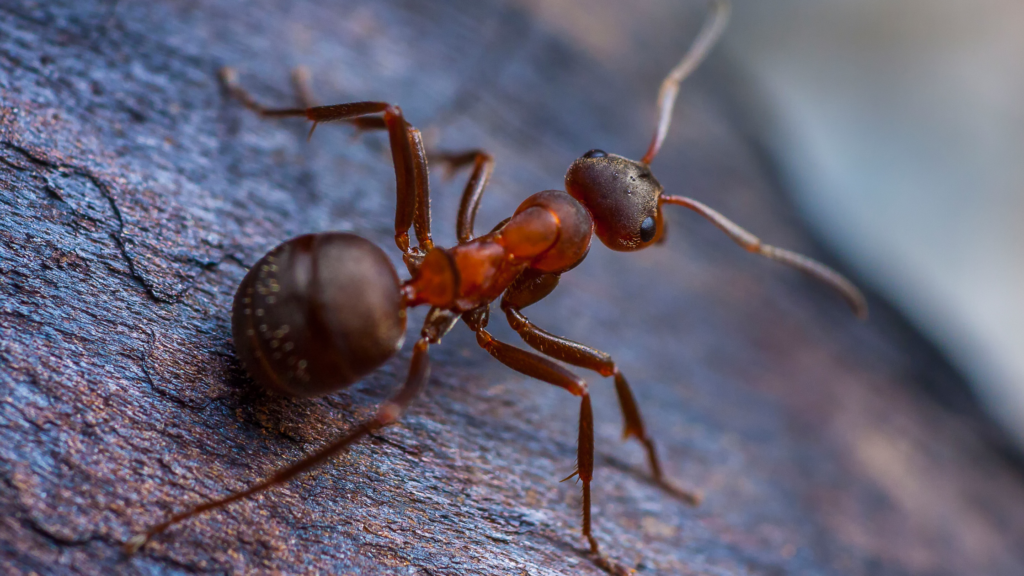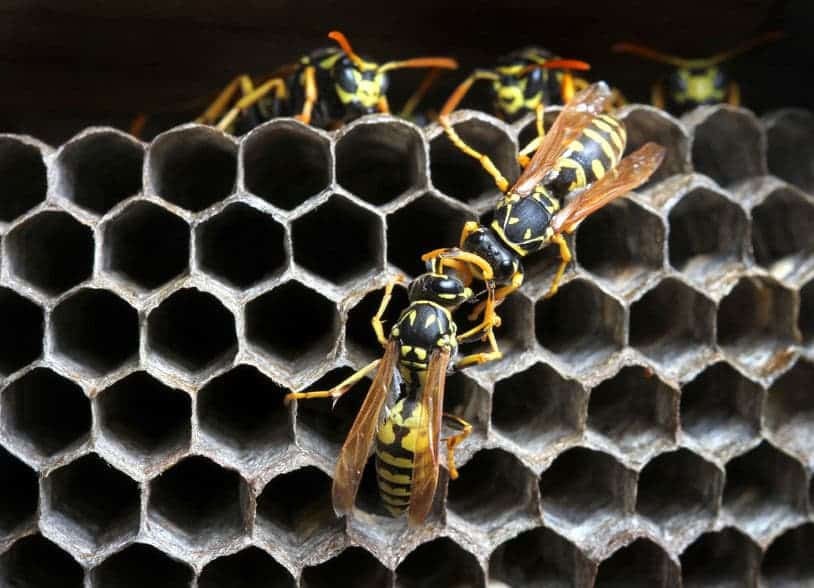If you’ve got drywood termites, beetles, or bed bugs in your St. Petersburg home or business and the problem is severe, then whole structure fumigation services can be the pest control method of choice, the most effective one available today.
What, though, does that treatment involve? How do you prepare for fumigation? How do we ensure that your whole structure fumigation is safe? This post will walk you through the process, using termite fumigation as the example. To schedule a free inspection and receive a free estimate, just contact us online.
DRYWOOD TERMITE DAMAGE
Unlike some other species of termites, drywood termites don’t construct their nests in the ground. That’s because they can get all the moisture they need from the wood they eat and the humidity in the air—and so they enter St. Petersburg homes through exposed wood, infest that part of the home or business, and build their nests in the wood itself.
Some colonies stay in one part of a home or business while others spread through the structure, creating even more widespread damage. They gnaw their way through wood in the building, including through beams, and can seriously weaken the entire structure. Damage can be quite costly and so, when the colonies get too large, termite fumigation may become necessary.
ST. PETE PEST CONTROL: TERMITE FUMIGATION SERVICES
At a high level, you’ll remove certain items in your home and unplug others, and then we’ll seal the space—that’s called “termite tenting”—before releasing a fumigant in gas form. The result is highly effective extermination of pests in every stage of their life cycles. Then, before you can re-enter your home or business, we’ll ventilate the space, letting you know when it’s safe to go in again.
SPECIFICS ABOUT PRE-FUMIGATION
This is one of the most important parts of the process and, when you plan to have fumigation services at your home or business in St. Petersburg, we’ll share more specifics about the steps needed for your structure.
Steps for indoors include
- Remove any food or drink items that aren’t completely sealed in airtight containers. These include what you have stored in your refrigerator and freezer. If possible, you can ask friends and family members to store this food and drink until it’s safe to bring it back into your own home to consume.
- Find a place where your animals can stay during the fumigation process. This includes fish.
- Relocate your living plants, as well.
- Contact your gas company and let them know you’re having termite fumigation done and you’ll need to turn the gas supply on and off. Before the process begins, you’ll also need to extinguish pilot lights in the building.
- Keep the water supply and electrical power on.
- Unplug all heating elements in the structure. This includes those in computers, television sets, pianos, organs, and air conditioning units, among others.
- Remove all baby mattresses in cribs, bassinets, swings, pack-n-plays, and play-yards.
- Also remove mattresses that have plastic coverings and high-density foam ones.
- Take plastic coverings and linens off of mattresses and pillows.
- You can keep curtains and drapes, towels and linens in the home, but open your drapes/curtains and raise the blinds.
- Open all drawers, cabinet doors, and closets by at least four inches.
- Open up access to your attic.
- If there is a safe that’s big enough for a child to enter, open that up for our inspection (both before and after fumigation).
Steps for outdoors include:
- Remove any loose items that are close to the building. These include tables and chairs, plants, and more.
- Cut back plants, foliage, and branches that are near the structure to the point where they can easily fall to the ground.
- Detach any vines.
- Trim tree limbs that go over the roof.
- If there are shrubs or other plants that are located near the structure, water them heavily before the termite fumigation is set to begin.
- Remove any fencing that is connected to the home or business building. Turner Pest Control technicians will inspect trellises and other similar items to let you know if they need addressed before the tenting process can begin.
- Lower any awnings.
- Rake rocks and mulch back until they are at least 18 inches away from the foundation.
- Remove pool enclosure screens.
TERMITE FUMIGATION SECURITY MEASURES
Before the process begins, it can be helpful to let neighbors know about the termite fumigation and when it’s scheduled.
To protect everyone, the law requires that your home or business be locked throughout the entire fumigation process. So, you will need to turn over your keys to all of your exterior access doors and disable keyless lock systems. A lock box will be provided to you. We’ll put secondary locks on all of your exterior doors, and it’s crucial that you not try to enter until all of the extra locks are removed.
To help prevent theft during the termite tenting in St. Petersburg, FL, we’ll inject tear gas into the structure. We can’t, though, be responsible for any vandalism, breaking and entering, or theft.
POST-TERMITE FUMIGATION SERVICES
Once this St. Pete pest control service is completed, including aeration, the structure is typically safe for occupancy. On average, this occurs by 5 p.m. on the third business day. Once we let you know that all is safe for your return, you can replace what you’ve removed, including pets and plants, plug in items, and otherwise return the home or business to its normal operations.
CONTACT US FOR TERMITE TENTING: ST. PETERSBURG, FL
For more than 50 years, we’ve been helping families and businesses like yours, tackling their toughest pest challenges. Our St. Petersburg whole structure fumigation services are 100% effective at getting rid of drywood termites, beetles, bed bugs, and other unwanted critters.
We recognize that you have plenty of choices for your St. Pete pest control and we appreciate your confidence when you choose us for fumigation and other pest control services. To get your free estimate and no-obligation quote, please contact us online.



